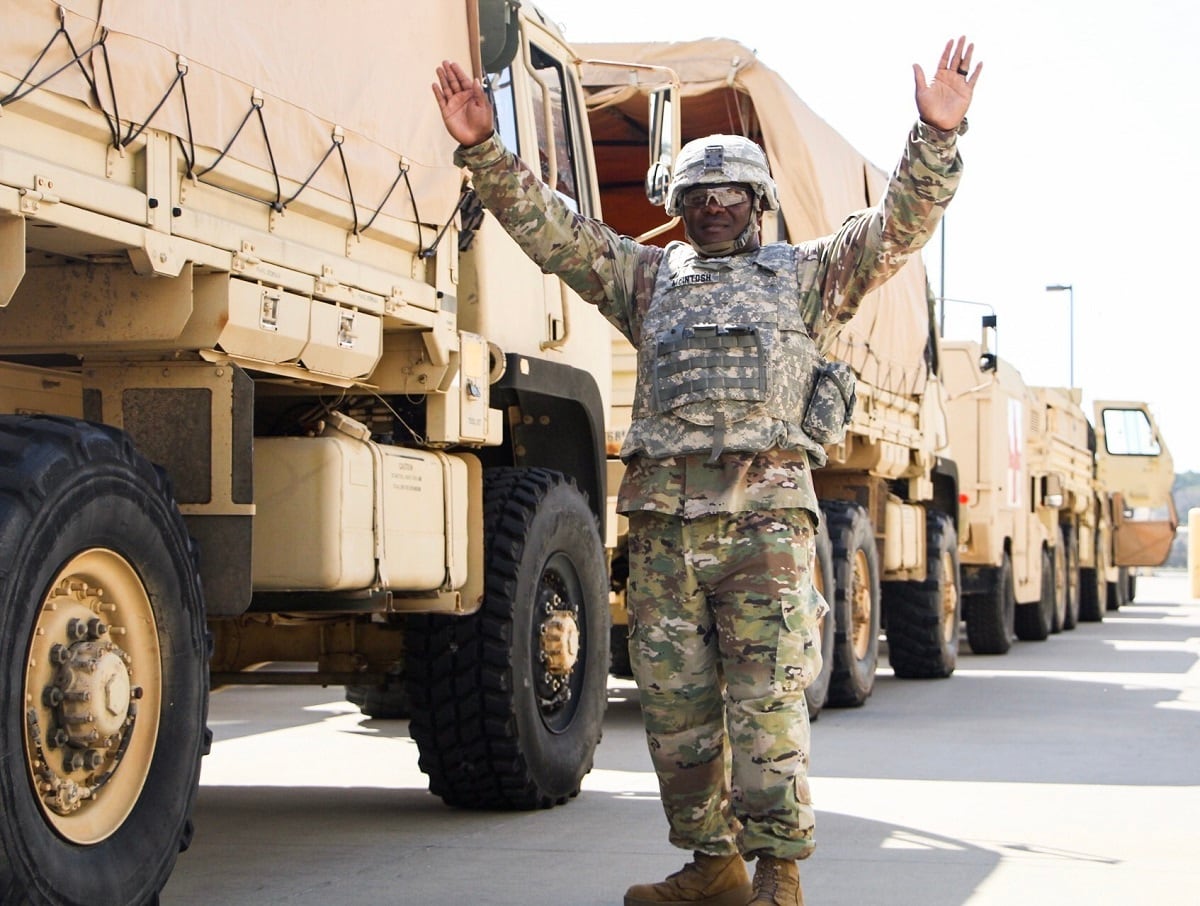Army logisticians simultaneously must pull lessons from the past two decades of war while also getting ready for combat that’s both unprecedented in speed and violence and requires smarter use of materials.
“We’re going to fight an enemy that can pretty much see the whole battlefield space [and electromagnetic signals] and has a magazine depth and range to hit anything he can see that’s not moving,” said Lt. Gen. James Rainey, deputy chief of staff for Army G-3/5/7.
RELATED

Rainey spoke alongside other panelists at the Association of the U.S. Army’s annual meeting Tuesday about sustaining multidomain operations.
The tactical and strategic thinking of those Army sustainers isn’t limited to loading gear on airplanes or ships; it starts much earlier.
“From your house to your armory, from your fort to your port, from your port to the next port or [aerial port of debarkation] onward from there, we’re going to be contested 100 percent of the time,” Rainey said. “There’s no place you can relax, rest or let your guard down.”
As an operational commander, Rainey both applauded the work of logisticians over the past two decades and cautioned against expecting everything ready, on demand at all times.
“I’m guilty of this, I’m not being critical of anybody,” Rainey said. “You guys have kind of spoiled your operational brothers and sisters over the last 20 years. I cannot recall a time in which a logistician told me as a commander that I could not do something.”
That means ground commanders will have to factor in scenarios in which some supplies will be unavailable — where some tactical plans will not be feasible.
He advised sustainers to “demand a seat at the table” and be a part of the planning from inception and pushback.
Another panelist, Lt. Gen. Flem Walker, deputy chief of Army Materiel Command, pointed to the “so what” of logistics in multidomain operations. It’s important to understand the logistics footprint has modern, resilient, and sustainable installations to enhance strategic readiness; focuses on “increased velocity” for delivering pre-positioned stocks in theater; and addresses supply chain resiliency and protection, he said.
Lt. Gen. Duane Gamble, deputy chief of staff for Army G4, dug deeper on one of those principles: “understanding the footprint.”
Gamble said during the event that good logisticians develop an understanding of what units need before they need it, based on their experience. While recent wars provided much of that experience, he added, they’re nothing like what’s coming, which will require demand reduction.
In recent years, the Army Combined Arms Center published a whitepaper calling for demand reduction for future operations. Three of the dozen-plus items on that list are being worked in earnest now, Gamble said.
The Army is working on increasing the size of tankers to deliver fuel, which means fewer trucks delivering fuel. That translates into fewer targets for the enemy, a reduced footprint and fewer trucks burning fuel to get petroleum where it needs to go.
The service is building in the wiring harness so that all new vehicles are ready to go for leader-follower robotic vehicle convoy operations when that technology is approved for Army-wide implementation. “Once applied, that will double the capacity of a [Palletized Load System] company,” Gamble said.
Lastly, but perhaps one of the biggest savers, is prognostic and preventive maintenance. New Army programs will help that dramatically, he said.
The future Bradley, Paladin howitzer and Armored Multi-Purpose Vehicle will all use the same power train, meaning the same parts and same mechanical know-how can be used on all three major systems and their variants, he said.
Todd South has written about crime, courts, government and the military for multiple publications since 2004 and was named a 2014 Pulitzer finalist for a co-written project on witness intimidation. Todd is a Marine veteran of the Iraq War.





